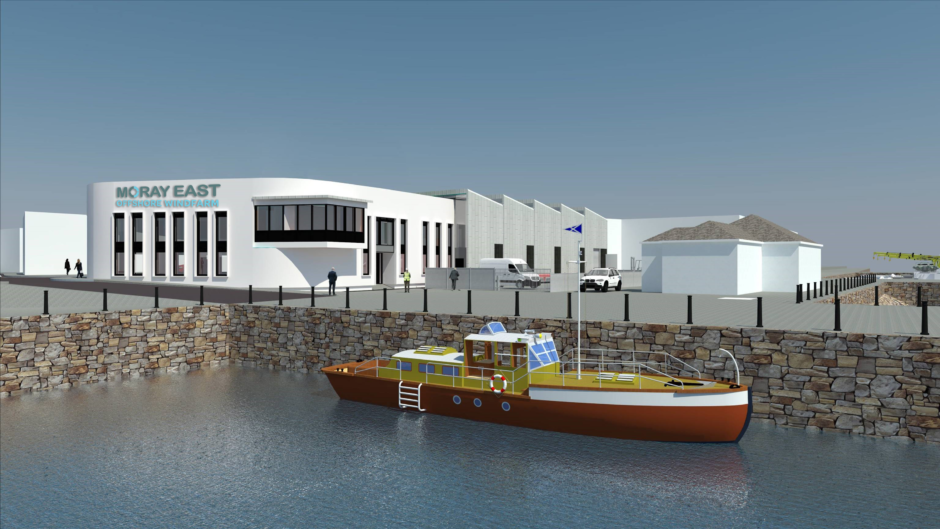World
Ocean Winds hails impact of £3.5billion offshore wind investment in Scotland

Developers of two vast offshore windfarms in the Moray firth have hailed the “mind blowing numbers” revealed in an economic impact assessment.
Launching a supply chain report, Ocean Winds (OW) said its overall planned investment in UK offshore wind totals over £3.5 billion.
The firm is joint venture between Portuguese energy firm, EDP Renewables (XLIS: EDP), and French company Engie (XPAR: ENGI).
Offshore wind in UK
Its first UK offshore wind farm, the 950MW Moray East project, came online in 2022 and completion of the next phase, 882MW Moray West, is imminent.
It has further plans for the 2GW Caledonia project also in the Moray firth which is due to be connected in 2030. Another is the 2.3GW Arven floating offshore wind project off the coast of Shetland in partnership with Mainstream Renewable Power.
Speaking at the event in Aberdeen, Adam Morrison, OW’s UK country manager said he was confident the Caledonia wind farm will be the first ScotWind project to be completed. “We know the Moray firth pretty well now.”
OW’s UK portfolio represent around a third of its offshore wind schemes across the world, including France, Portugal, South Korea and the US.
He said the capability that now exists in Scotland was a “crucial factor” in attracting investment from wind developers, not least Ocean Winds.
“We have port facilities that can already do this, it is a big constraint in other markets.
“But in Moray firth we are pretty fortunate to have construction and operational ports that can already do this for us.
“That is a major part of ensuring there is confidence from the company in delivering projects here.”
OW has a second O&M base at Buckie and works with Port of Nigg and Port of Cromarty Firth.
Local content
He said Ocean Winds was not required to meet targets in how much “local content” was included in its capital expenditure on supply chain, unlike others being developed across the UK – but the group did so anyway.
The Contracts for Difference (CfD) UK government renewable energy funding scheme requires developers of 300MW and above to commit to engage local content in their supply chain plans.
As part of the Offshore Wind Sector Deal, the industry as a whole has committed to a voluntary target of 60% lifetime UK content in domestic projects, (up from the current 50%) by 2030.
OW did not provide a percentage figure. However, Moray West is not reliant on CfD for finance having struck lucrative power purchase agreement (PPAs) with tech giants Amazon and Google.
He said Moray West “has a number of different power offtake arrangements, so our CFD is quite small.
“We are not bound by those rules. But we chose to meet those commitments above and beyond anyway.”
He added the amount of work delivered by UK suppliers “would have happened naturally anyway”.
In particular he said Ocean Winds “pushed very hard to bring substation fabrication back to the UK”.
Two substations for Moray West were fabricated at the Smulders steel production facility in Wallsend, North Tyneside near Newcastle. This was also where 55 jacket foundations for Moray East were built, a £200m contract.
Inter-array cables (IACs) for Moray East supplied by JDR at Hartlepool while Global Energy Group delivered “critical foundations infrastructure” from its site at Nigg.
Scottish suppliers also included Balmoral Group which supplied cable protection on Moray West while the family-owned Robertson Group provided civil construction support to the onshore substation near Keith.
OW commissioned BVG Associates who determined development and construction of both wind farms so far had contributed a £700m GVA boost to the UK economy. Over it’s lifetime, Moray West alone will represent £800m of expenditure in the Scottish economy.
Morrison added: “The numbers are always mindblowing.”
Chasing the wind
Other speakers at the event at Aberdeen’s Chester Hotel included Doreen Mair, vice convenor of the board of commissioners for Fraserburgh Harbour.
She said the result of the trust port having been chosen as the main base for Moray East meant Fraserburgh is “no longer at the end of the road it is the beginning sea”.
“Fraserburgh chased the wind and we captured it too,” she said.
“One of the biggest offshore wind farms in Scotland was planned managed and executed from Fraserburgh.”
Fraserburgh Harbour, the largest shellfish port in the UK, aims “certainly to provide that to Caledonia in the future too,” she said.
“Ironically to protect the harbour’s fishing industry we had to diversify our income streams which is why we looked to offshore wind.”
She said the harbour board had been looking into attracting the industry since 2011. This was despite not having been initially excluded from the list of suitable ports to deliver offshore wind in the Scottish Government’s National Renewables Infrastructure Plan.
She said this had been “disheartening” but that “we picked ourselves up and kept on going”.
Paul O’Brien manager of the Deepwind Cluster highlighted his trade body is the largest in Europe of its kind, having close to 900 members active in Scotland’s offshore wind supply chain including 39 developers.
He said offshore wind represents a “huge opportunity area for supply chain companies across this region”.
He said subsea expertise in the north-east of Scotland was particularly transferable to floating offshore wind.
“That is really going to impact not just on the Scottish companies involved but internationally.
“As floating wind gains a world-wide market what we want to see is Scottish companies going out to those markets and becoming exporters of talent and products.”
Recommended for you

Lamprell delivers final transition pieces for Moray West wind farm


 © Supplied by DCT Media
© Supplied by DCT Media






